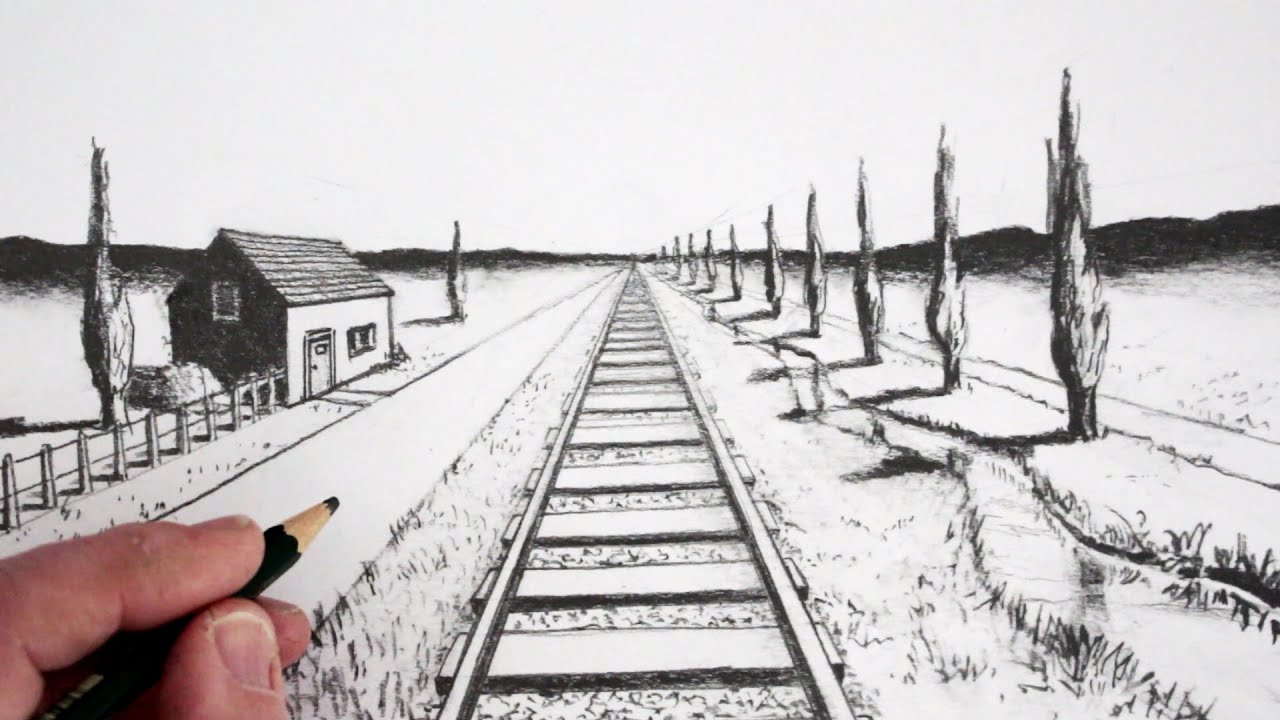In this article we will detail what the one point perspective in art is and define one point perspective in art. We will also look at the one point perspective on the examples of the works of famous artists.

What is one point perspective in art?
The definition of one-point perspective in art is understood as a mathematical method that helps to represent a three-dimensional drawing on a two-dimensional surface. In this case, the method consists in applying lines that will intersect and return to one point distant at a certain distance.So, what does one-point perspective mean in art? With it, you can easily create drawings if the subject is far away from you. Objects will get smaller as they move away from the eye. This allows you to create a completely realistic drawing. Only one vanishing point is used in the work.

You can also optionally use a horizon line and a series of stripes. This helps to form a complex visualization that will not differ from the real world. With simple steps, you can create a beautiful 3D image.
In this perspective, the image is viewed face-to-face, which means that all planes that we can see are flat. If you want to draw an image that is not as flat as we discussed before, you must use a two- or three-point perspective, which allows you to capture multiple angles.
In this perspective, the image is viewed face-to-face, which means that all planes that we can see are flat. If you want to draw an image that is not as flat as we discussed before, you must use a two- or three-point perspective, which allows you to capture multiple angles.
The need to use
Clients do not always know the specifics of the technical process. Therefore, they need to be shown how the building, room, or general object will be rendered. This will help them understand exactly how the finished project will look.With the help of a one-point perspective, you can ideally convey design ideas to the customer. And this technique is also very applicable in art.
Examples of one-point perspective in art
Invented in the 15th century by the famous Filippo Brunneleschi, perspective has become an important basis and support in the visual arts over time. This model has shown its significance and importance to such an extent that it has become almost indispensable and has been used in the works of many artists.
Even artists who preferred to paint abstract paintings couldn’t get past the use of 3D references to add perspective to their masterpieces. Such a kind of perspective is seen in the paintings of such famous artists as Van Gogh, Leonardo da Vinci, and David Hockney, to name but a few.
During the Baroque era, artists such as Pietro da Cortona and Andrea Pozzo used their knowledge to develop the amazing work of Andrea Mantegna and perfect the technique of illusionist painting called quadrature.
Two other masters of one-point linear perspective are the Dutch artists Pieter Saenredam and Emanuel de Witte, known for their architectural paintings of church interiors.
During the Baroque era, artists such as Pietro da Cortona and Andrea Pozzo used their knowledge to develop the amazing work of Andrea Mantegna and perfect the technique of illusionist painting called quadrature.
Two other masters of one-point linear perspective are the Dutch artists Pieter Saenredam and Emanuel de Witte, known for their architectural paintings of church interiors.












